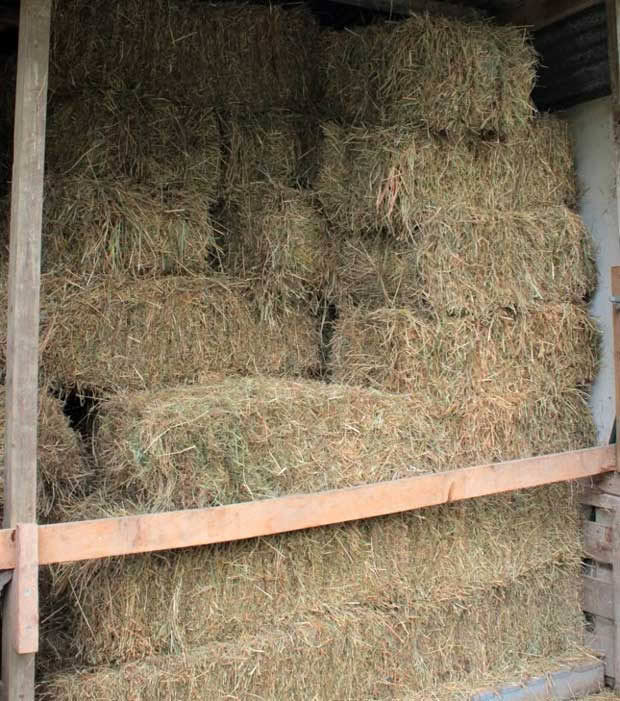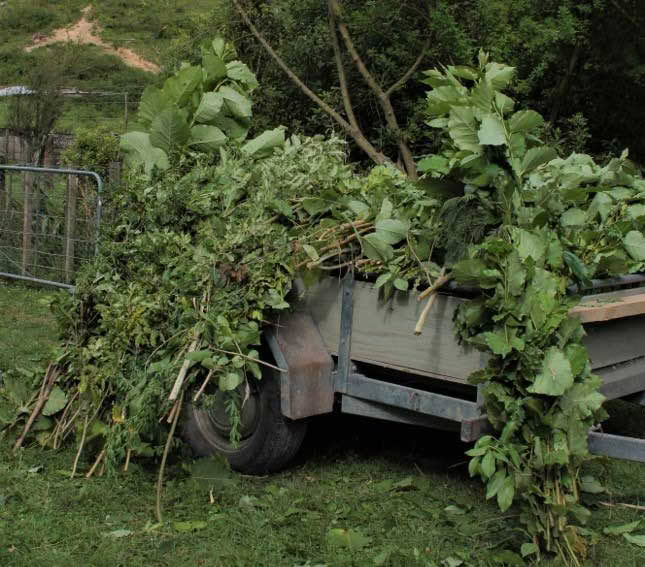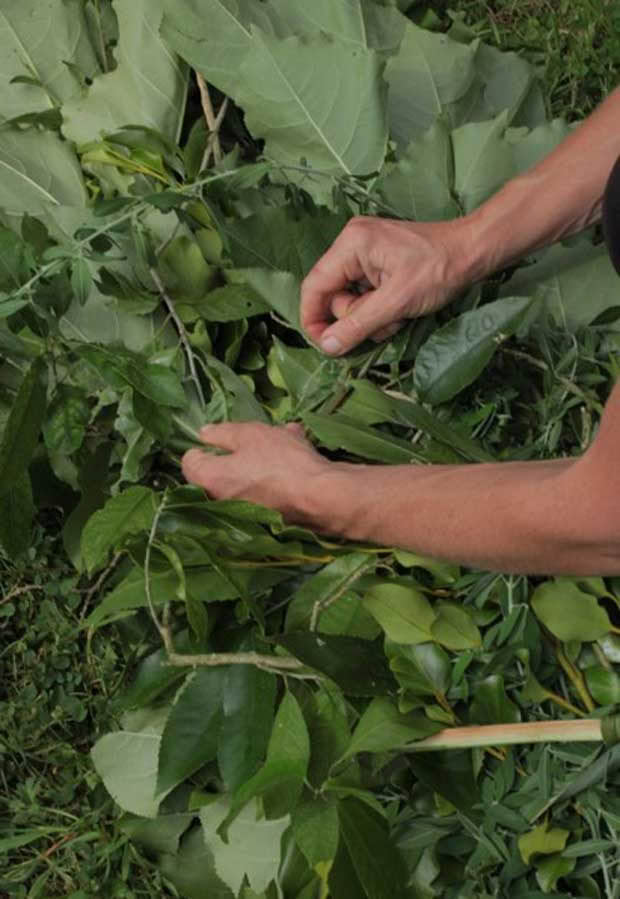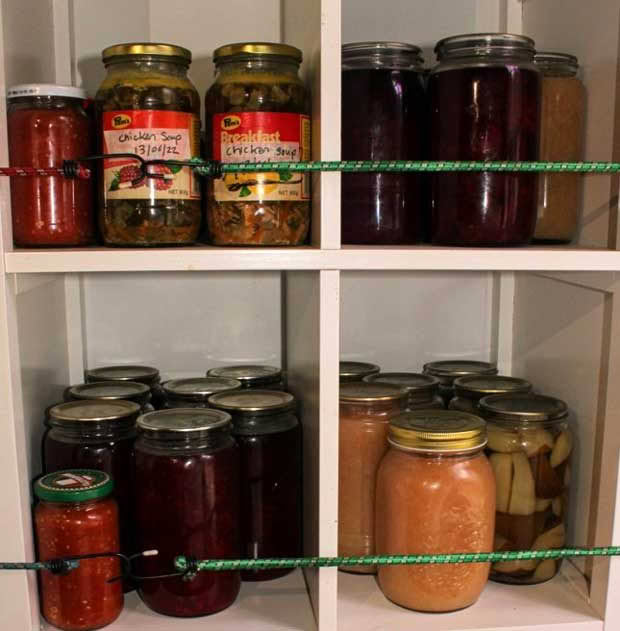Rebecca Stewart: Make tree hay while the sun shines
When wet weather makes traditional hay making a drama, Rebecca Stewart finds making tree fodder hay a much more enjoyable process.
Photos: Summer Stewart
You might well be wondering when it will be possible this year to make hay in the sunshine.
The Far North is becoming known as the Wet North and even our old hometown of Gisborne, generally known for having more than its fair share of sweltering summer days, is seeing masses of rain. And Auckland flooded.
The upside? There’s no drought. The downside? Well… wrecked roads, crop loses, damaged properties here there and everywhere. And the irony that we, living in a rainforest area in central North Island, have received less rain than most of the rest of the island.

The sun shone on our neighbour’s haymaking long enough to get the pasture cut, dried, baled and into the shed. We did work until 11 pm stacking bales in the dark. Hay making can be a stressful time of watching the weather, watching the quality of the pasture in the paddock and needing to get the contractor in exactly when everybody else wants and needs them.
Picking up the conventional bales requires lots of manpower-helpers. No wonder so many farms today make the wrapped bales that take some of the stress off. But the old-style conventional bales have their use, especially for smaller landowners like us. They’re easy to handle, stackable on a trailer – even if we have to do three loads to get them home – and there’s no plastic rubbish to deal with. Never mind the hay fever, itching and dusty clothing after a stinking hot day lugging bales around the paddock.

I have decided making tree hay is a much nicer process. We gather branches from our fodder trees on a cool overcast day. We sort the prunings into bundles and tie them off with flax strips. Then hoist the bundles up onto drying racks over the calf pen. These tasty nutritious leafy boughs will sit there till winter, slowly drying, before being added to the livestock’s daily feed. It’s a traditional method predating pasture hay and one we are trialling. Having tested it last year we are optimistic about it being a big part of our future feed systems. So much so we are growing a variety of fodder tree seedlings in our vege garden. These will eventually be planted out to become our future fodder feedlot. We are trialling poplar, mahoe, tree lucerne, grislinea, tarata (lemonwood), chestnut and alder.

Diversity is all about not having all your eggs in one basket. This is why we must take full advantage of ‘making hay while the sun shines’. To develop our self-sufficient mindset, we must make the most of what resources we have. We never know what might happen next week, next month or next year.
A clear example is a late hard frost in October that destroyed our plum and peach crops. This year’s sad scattering of plums is not even enough to make one bottle of the plum sauce we usually enjoy all winter.

Fortunately, the previous year yielded a bounty of plums and our preserving cupboard still holds many jars of these deep red tree jewels. If we make the most of these bumper crops and have a diversity of fruit and crops planted, times like these will have less impact on our food security. And if we develop more options for our livestock feed we have better food security for them too, and that is our focus here on Fodder Farm.

